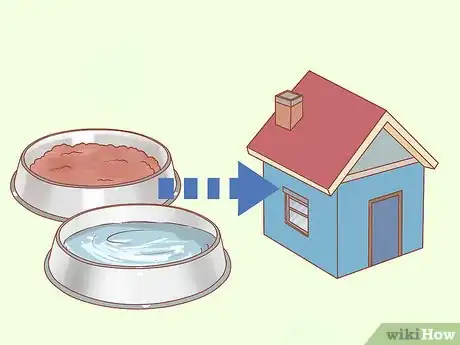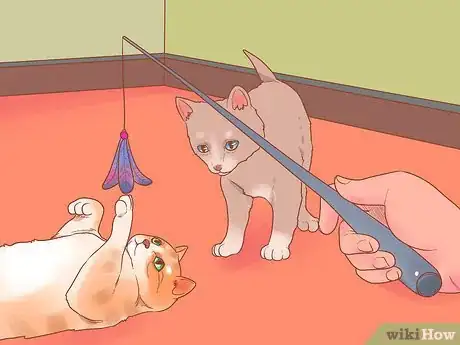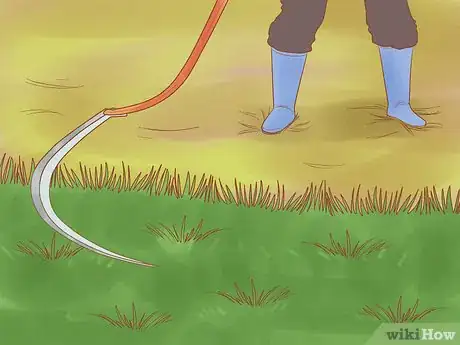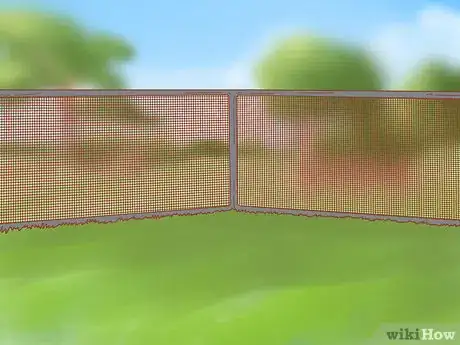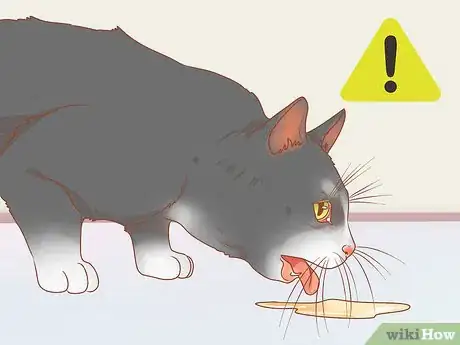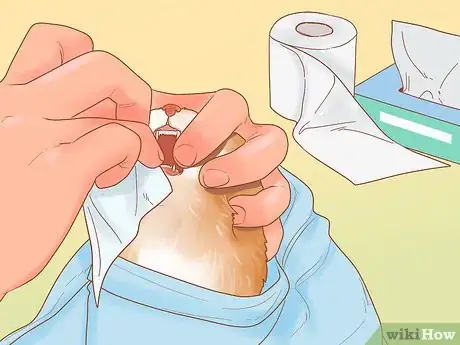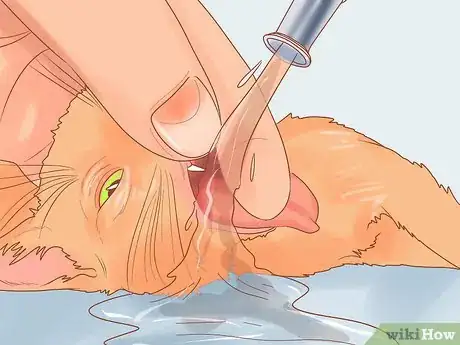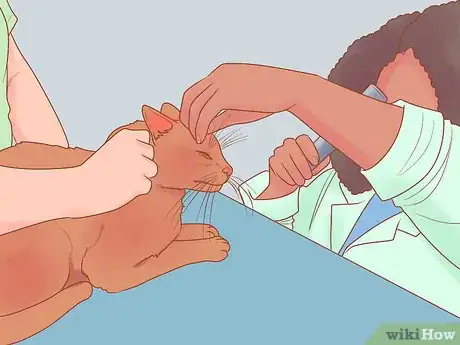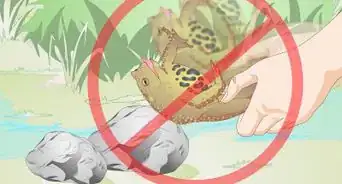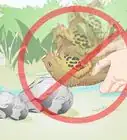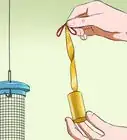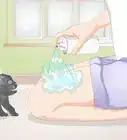This article was co-authored by wikiHow Staff. Our trained team of editors and researchers validate articles for accuracy and comprehensiveness. wikiHow's Content Management Team carefully monitors the work from our editorial staff to ensure that each article is backed by trusted research and meets our high quality standards.
wikiHow marks an article as reader-approved once it receives enough positive feedback. In this case, 80% of readers who voted found the article helpful, earning it our reader-approved status.
This article has been viewed 90,596 times.
Learn more...
The cane toad (Rhinella marinus or Bufo marinus) is a small toad commonly found in Australia and Hawaii with poison glands along their backs. If your curious cat or dog tries to play with or attack the cane toad, it will spray a toxic liquid towards the eyes and mouth of your pet. As well as being very painful for your pet, it can sometimes even put it in a coma or result in its death. By knowing how to reduce the risk of cane toads and how to treat a poisoned pet, you can keep your animals safe from cane toads.
Steps
Reducing the Risk of Cane Toads
-
1Store your pet’s food and water indoors. Cane toads, like any other creature, will be attracted towards bowls of food or fresh water left outside. While the toad eating some of your pet’s food won’t lead to poisoning, a pet that tries to defend its food might be attacked. Feed your pet and store its water inside the house, where cane toads won’t be able to find it.
- Cane toads are known to lay eggs in still water, which may include a water bowl. Change your pet’s water often and keep it inside to prevent cane toads from swimming in it.
- If you can’t keep food bowls inside, feed your pet regularly and watch it eat to make sure no cane toads come towards it.
-
2Watch your pet while it plays outside. Particularly playful or aggressive pets, such as young puppies, might be more likely to attack or interact with cane toads. Supervise your pet while it plays outside so that you can prevent it from touching a cane toad, or keep an eye on it to look for any symptoms of poisoning.[1]
- Rather than letting your dog run around unsupervised for exercise, take it for regular walks. This way you can watch it while it's outside, as well as giving it and yourself plenty of physical activity.
Advertisement -
3Keep your pets indoors at night and after rain. Cane toads tend to be more active at nighttime and in damper weather. If you see cane toads in your yard or know them to live in your area, keep your pet inside during times when cane toads will be more active.[2]
- If you let your pet play outside in the rain, make sure you supervise it closely. It may be more difficult to notices symptoms of poisoning on a wet dog.
-
4Reduce common hiding spots for cane toads. Cane toads will often hide in piles of debris or under large bushes during the daytime so as to avoid the direct sun. If you can do so safely and easily, get rid of these and any other places where cane toads may be able to hide.[3]
- If you cannot remove these hiding spots, check them often for cane toads. If you find one, catch and kill it safely and humanely.
-
5Build a barrier to keep out cane toads entirely. If you have a serious cane toad problem, or just want to keep them out of an area entirely, you can build a barrier to stop them from getting into your garden. Use a fine mesh wiring, at least 50 centimetres (20 in) high, to build a barrier fence around your entire garden or yard to keep them out.[4]
- Once you erect the fence, you will need to remove all of the toads in the barrier fence area to make it completely safe.
- You don’t need to fence off your entire garden. You could enclose a small section where your pets will be able to safely run around and pay.
Treating a Poisoned Pet
-
1Look for symptoms of cane toad poisoning. If your pet is sprayed with or makes mouth contact with a cane toad, there may only be a small window of time to save it. Keep an eye out for excessive drooling, unusual head-shaking, the pet pawing at its mouth, or unusually pink or reddish gums. Keep an eye out for these symptoms at all times.[5]
- The symptoms of cane toad poisoning will usually be visible within around 10 minutes of your pet being poisoned.
- If you notice more severe symptoms, such as seizures, vomiting, or cardiac arrest, get your pet to a veterinarian immediately.
-
2Wipe away poison around the mouth and gums. Use a damp paper towel or cloth to begin wiping away any visible milky-white poison or general dampness around your pet's mouth. Change out the paper towel or wash the cloth frequently to prevent smearing the poison you’ve wiped away back over its mouth and face.[6]
- This should be done quickly rather than excessively thoroughly. Remove any obvious poison and wipe its mouth before moving on.
-
3Rinse your pet’s mouth with a garden hose. Stand behind your pet and hold a garden hose such that the water will run through its mouth and pour out the front. Turn the water on and wash your pet’s mouth out with water for at least 10 minutes to rinse away and remove any poison.[7]
- Make sure you do not point the hose toward your pet’s throat or hold it in a way that it can drink the water. This may introduce more poison to its system, as well as risk drowning your pet.
-
4Get your pet to a vet as soon as possible. Once you have rinsed as much poison out of your pet’s mouth as you can, transport it quickly and quietly to a vet. Even if you don’t notice any remaining symptoms, cane toad poison that has been ingested can lead to your pet’s death.
- For safest transportation, hold your pet while someone else drives so that you can keep a closer eye on it. Otherwise, you can put it in an animal carrier for the journey.
- Contact your vet as soon as you can, so that they can prepare to help you and your pet as soon as you arrive.
Community Q&A
-
QuestionWhy shouldn't I kill the cane toad?
 Community AnswerYour dogs might lick up the organs and they are poisonous.
Community AnswerYour dogs might lick up the organs and they are poisonous. -
QuestionWhen I spray a toad with ammonia, does the poison get taken into the ground, and are they still poisonous when they're dead?
 Amy HarrisonTop AnswererYes and yes. Cane toads are still poisonous when dead, so it's essential to keep your pets away from them even when they're not alive. Also, the poison stays into the ground, which is why you must take precautions before attempting to eliminate cane toads from your back garden.
Amy HarrisonTop AnswererYes and yes. Cane toads are still poisonous when dead, so it's essential to keep your pets away from them even when they're not alive. Also, the poison stays into the ground, which is why you must take precautions before attempting to eliminate cane toads from your back garden. -
QuestionWhy not kill the toad?
 ArnavCommunity AnswerWhen you kill the toad, the body's poison can just be taken into the ground, which means that your lawn will become doom zone for outdoorsy pets.
ArnavCommunity AnswerWhen you kill the toad, the body's poison can just be taken into the ground, which means that your lawn will become doom zone for outdoorsy pets.
Warnings
- Rinse out the mouth and eyes of a dog or cat who has been sprayed by a cane toad. Get your pet to the vet immediately.⧼thumbs_response⧽
References
- ↑ http://the.honoluluadvertiser.com/article/2003/Jan/12/il/il12a.html
- ↑ http://the.honoluluadvertiser.com/article/2003/Jan/12/il/il12a.html
- ↑ https://edis.ifas.ufl.edu/pdffiles/UW/UW43200.pdf
- ↑ https://youtu.be/iLrtjFbkxiQ?t=111
- ↑ https://edis.ifas.ufl.edu/pdffiles/UW/UW43200.pdf
- ↑ https://edis.ifas.ufl.edu/pdffiles/UW/UW43200.pdf
- ↑ https://edis.ifas.ufl.edu/pdffiles/UW/UW43200.pdf
About This Article
If you live in Australia or Hawaii and you need to keep your pets safe from cane toads, keep them inside as much as possible, especially at night and after a rain, when cane toads are more active. Also, store your animals’ food and water bowls inside so they’ll be less likely to attract the toads. When your pets are playing outside, watch them carefully so you can stop them if they approach a cane toad. You may also want to consider building a fine mesh fence around your property to keep toads out. For tips on treating an animal that’s been sprayed by a cane toad, read on!
